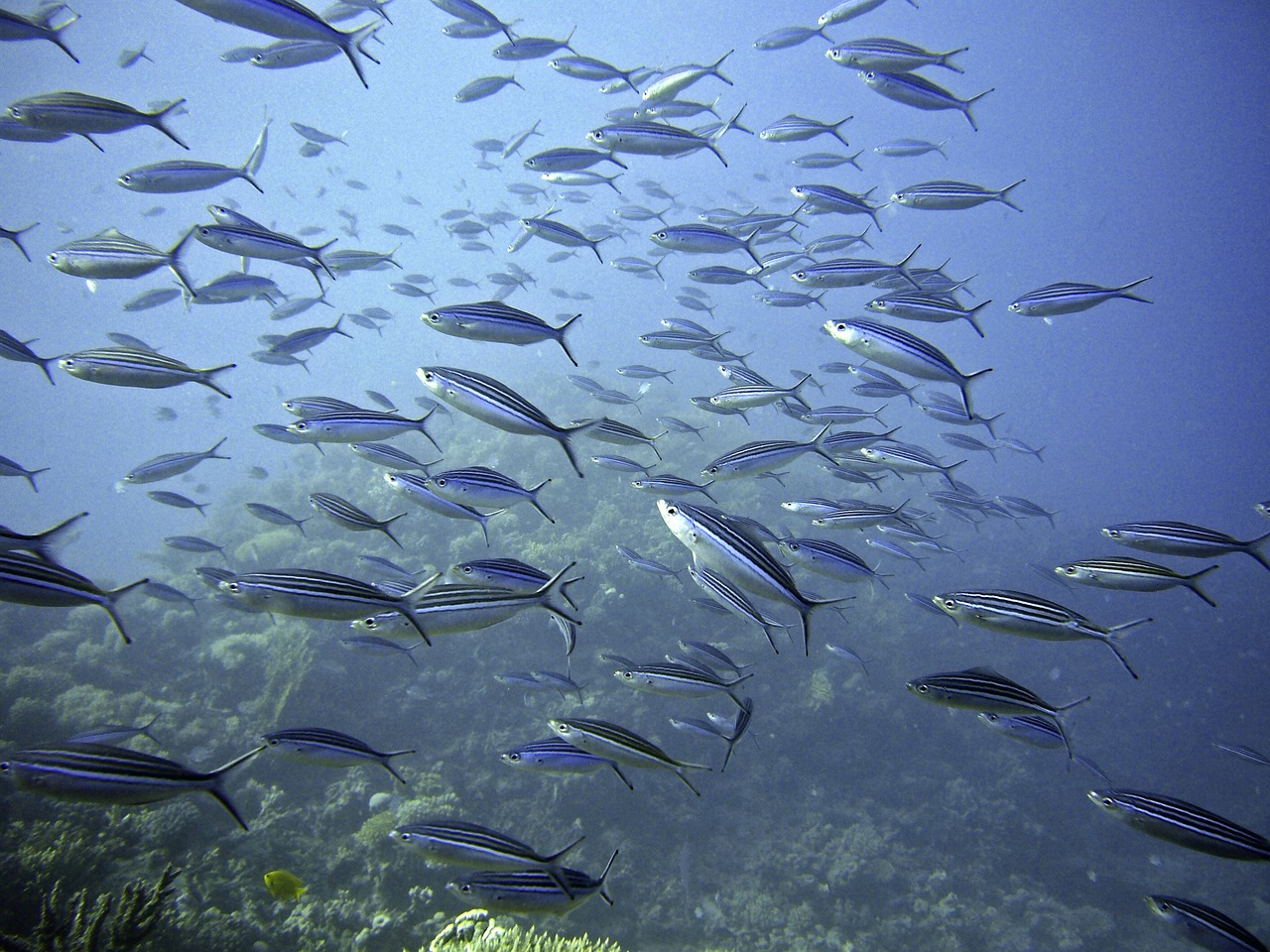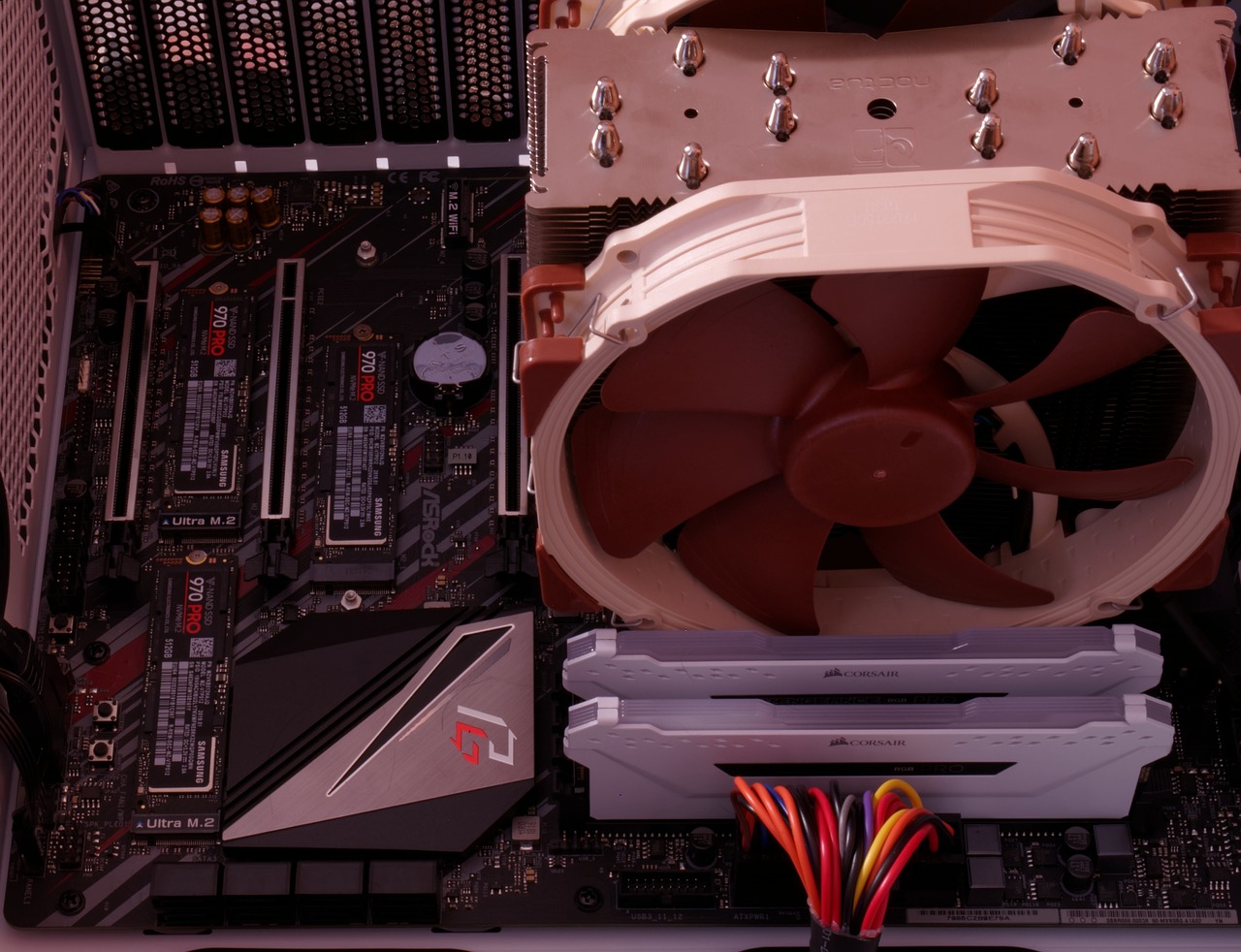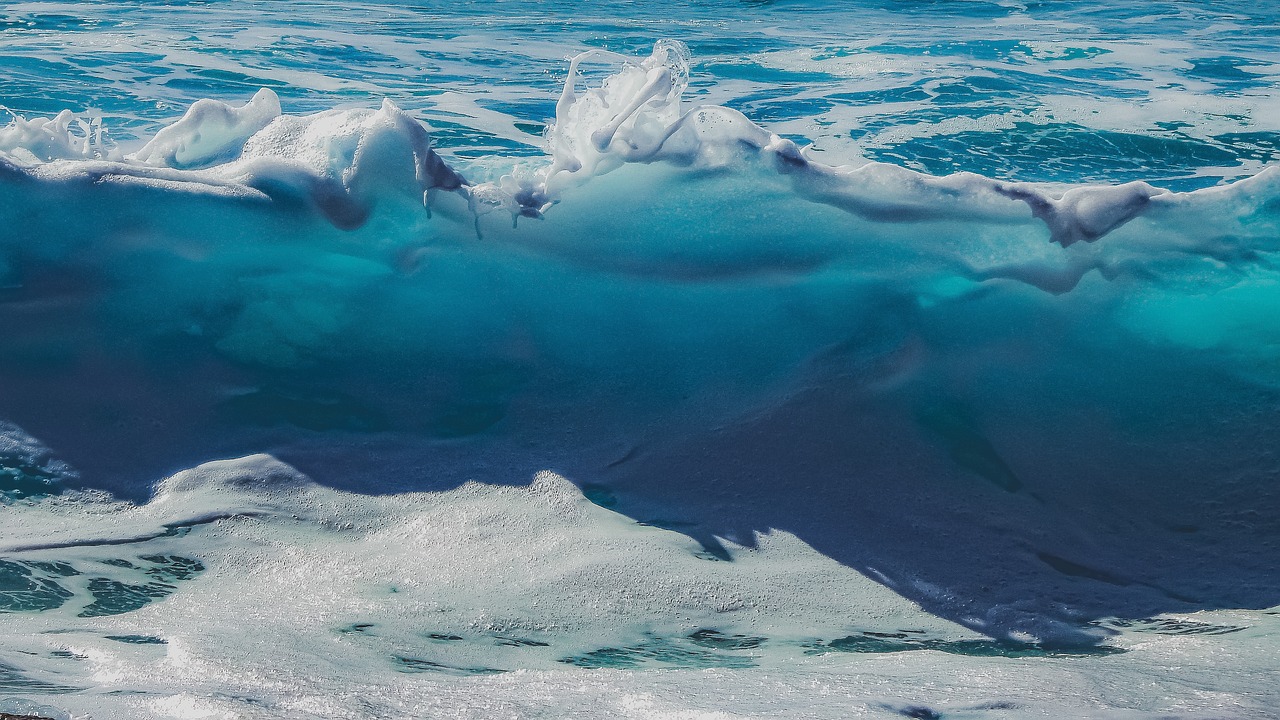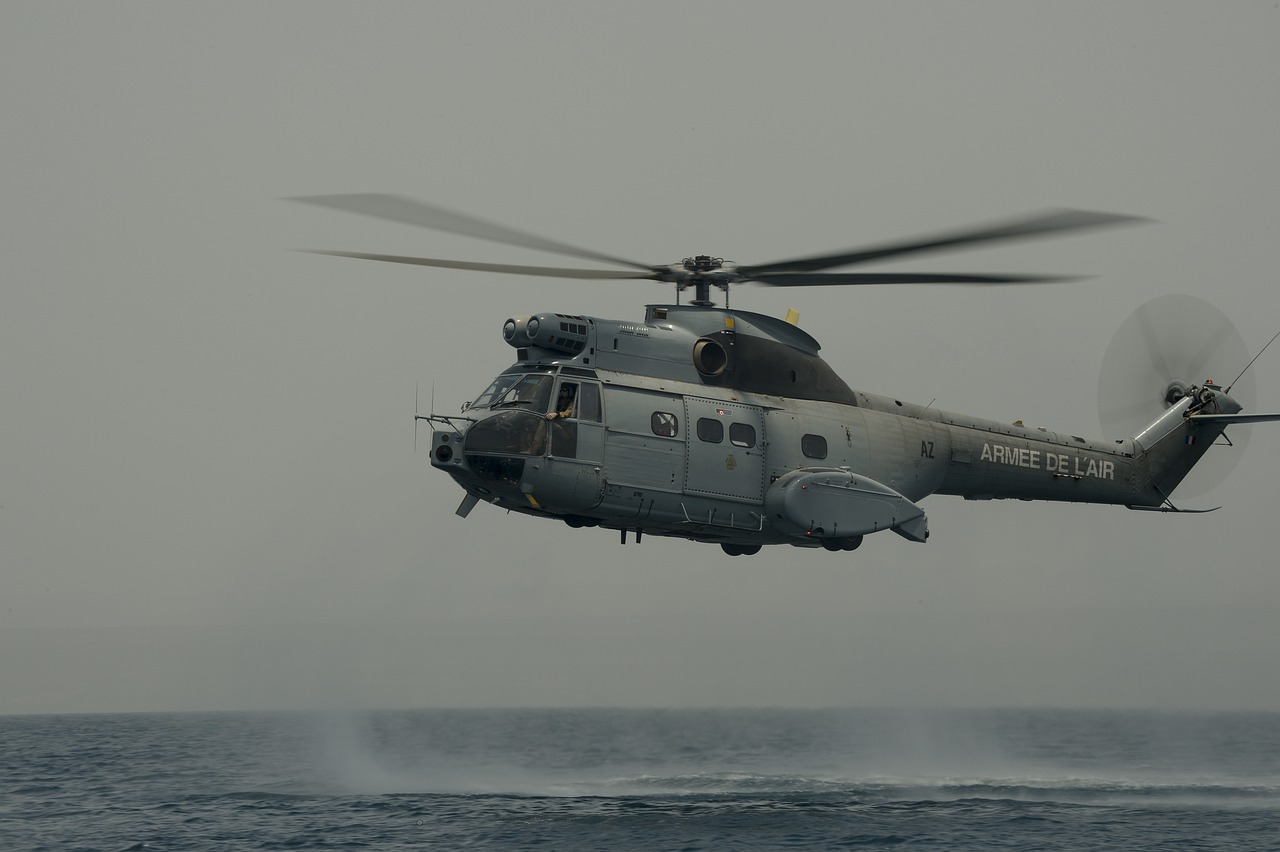The Use of the Remote Operated Vehicle (ROV) in Hazardous Environments
In today's world, the need for advanced technology to explore and operate in hazardous environments is more critical than ever. This is where Remote Operated Vehicles (ROVs) come into play. These unmanned, remotely controlled machines are revolutionizing the way we approach underwater exploration, disaster response, and environmental monitoring. Imagine sending a robot into the depths of the ocean or into a disaster zone where human presence would be perilous. ROVs have become the unsung heroes in these challenging scenarios, providing us with insights and capabilities that were once thought impossible.
Remote Operated Vehicles (ROVs) are designed with a specific purpose: to delve into environments that are often dangerous or inaccessible to humans. These sophisticated machines are equipped with a variety of components, including cameras, sensors, and robotic arms, which allow them to perform a multitude of tasks. Typically, they are operated from a surface vessel or a control room, where skilled operators can navigate through the murky waters or hazardous zones. The design of ROVs often includes features that enhance their durability and functionality, such as:
- High-resolution cameras for capturing detailed images and videos.
- Advanced sensors for measuring temperature, pressure, and other environmental factors.
- Manipulative arms for collecting samples or conducting repairs.
As technology advances, ROVs are becoming more sophisticated, enabling them to tackle increasingly complex missions. From deep-sea exploration to search and recovery operations, these vehicles are proving invaluable in hazardous environments.
ROVs play a crucial role in underwater exploration, allowing scientists and researchers to study marine life and geological formations without the risks associated with human divers. These vehicles are deployed in a variety of missions across oceans and lakes, uncovering the mysteries of the underwater world. One of the most significant applications of ROVs is in marine research, where they are used to collect data on biodiversity and ecosystems. Imagine being able to observe deep-sea organisms in their natural habitats without disturbing them—this is the power of ROVs.
Marine researchers utilize ROVs to gather crucial data that informs our understanding of ocean ecosystems. By studying deep-sea organisms and habitats that are otherwise inaccessible, scientists can gain insights into biodiversity, climate change impacts, and the overall health of marine environments. ROVs can reach depths of over 6,000 meters, allowing researchers to explore areas that were once thought to be beyond our reach. With the help of ROVs, we can:
- Document previously unknown species.
- Monitor the effects of pollution and climate change.
- Collect samples for further analysis.
In the oil and gas sector, ROVs are essential for underwater inspections and maintenance. They play a vital role in ensuring the safety and integrity of underwater pipelines and drilling operations. The ability to operate in extreme conditions makes ROVs a preferred choice for companies looking to minimize risks while maximizing efficiency. For instance, ROVs are deployed for:
- Pipeline monitoring to detect leaks or damage.
- Inspection of underwater structures and installations.
- Assisting in drilling operations by providing real-time data and visuals.
ROVs are increasingly being utilized in disaster scenarios, such as underwater search and recovery missions. Their ability to operate in hazardous environments makes them invaluable tools for locating and assessing damage. In situations where human divers cannot safely enter, ROVs can provide critical support. They are equipped with cameras and sensors that allow them to gather data and send it back to operators, enabling informed decision-making in the heat of the moment.
During disasters, ROVs can assist in locating missing persons or objects underwater. Their deployment in various search and recovery operations has proven effective in numerous cases. Imagine a scenario where a vessel has sunk, and every moment counts. ROVs can be deployed quickly to search vast underwater areas, providing real-time visuals and data that can help rescuers strategize their efforts.
ROVs are also utilized to monitor environmental conditions and assess damage after disasters. They play a crucial role in collecting data for ecological recovery efforts, helping scientists understand the impact of disasters on marine ecosystems. By providing detailed assessments, ROVs help communities and organizations plan effective recovery strategies.
Despite their advantages, ROVs face several operational challenges that can hinder their effectiveness. Understanding these challenges is crucial for improving ROV technology and operations. Common challenges include:
ROVs can experience technical malfunctions that hinder their performance. These issues can range from communication failures to equipment malfunctions. It's essential for operators to be prepared for such eventualities, often requiring backup systems and thorough pre-mission checks to mitigate risks.
Harsh underwater conditions, such as strong currents and poor visibility, can significantly impact ROV effectiveness. Operators must be skilled in navigating these challenges, often relying on advanced technologies and techniques to ensure successful missions. The unpredictable nature of underwater environments can turn a routine mission into a complex operation.
- What is an ROV? A Remote Operated Vehicle (ROV) is an unmanned, remotely controlled machine used primarily for underwater exploration and operations.
- How deep can ROVs go? ROVs can reach depths of over 6,000 meters, depending on their design and purpose.
- What industries use ROVs? ROVs are used in various industries, including marine research, oil and gas, disaster response, and environmental monitoring.
- What are the main challenges faced by ROVs? Common challenges include technical limitations, environmental factors, and operational risks associated with underwater missions.

Introduction to ROV Technology
Remote Operated Vehicles, or ROVs, represent a fascinating intersection of engineering and exploration. These unmanned, remotely controlled machines are designed specifically for navigating the depths of our oceans, lakes, and other hazardous environments. Imagine being able to explore the mysterious underwater world without getting wet! ROVs are equipped with advanced technology that allows them to operate in conditions that would be perilous for human divers.
The design of an ROV is a marvel in itself. Typically, they are constructed with robust materials that can withstand immense pressures found at great depths. The components of an ROV can be broken down into several key parts:
- Frame: The skeleton that provides structure and support.
- Cameras: High-definition cameras that capture stunning visuals of underwater life.
- Propellers: Powerful propellers that allow the ROV to maneuver through water with precision.
- Sensors: Various sensors that collect data on temperature, pressure, and more.
- Manipulators: Robotic arms that can interact with the environment, allowing for sample collection and repairs.
Operating an ROV involves a skilled team of pilots and engineers who control the vehicle from a surface ship or platform. Using sophisticated control systems, they can send commands to the ROV, allowing it to navigate through challenging terrains, such as rocky seabeds or intricate shipwrecks. The pilot's ability to interpret real-time video feeds and data from the ROV is crucial for successful missions.
One of the most exciting aspects of ROV technology is its versatility. They can be used for a variety of applications, from scientific research to industrial inspections. This flexibility makes ROVs indispensable tools in many fields. For instance, marine biologists rely on ROVs to study ecosystems that are otherwise unreachable, while oil and gas companies use them to inspect pipelines and underwater structures.
However, it’s not all smooth sailing (or diving, in this case). Operating ROVs comes with its own set of challenges, such as technical malfunctions and environmental factors like strong currents and murky waters. These hurdles require constant innovation and adaptation within the field of ROV technology.
In conclusion, ROVs are revolutionizing how we explore and understand our underwater environments. Their ability to operate in hazardous conditions not only enhances our knowledge of marine ecosystems but also plays a crucial role in industries that require underwater exploration and maintenance. As technology continues to advance, the possibilities for ROV applications are virtually limitless.
- What is the maximum depth an ROV can reach? Most ROVs can operate at depths of up to 6,000 meters, but specialized models can go deeper.
- How are ROVs controlled? ROVs are typically controlled using a tethered remote control system from a surface vessel.
- What kind of data can ROVs collect? ROVs can collect visual data, temperature readings, pressure measurements, and even water samples.
- Are ROVs used in military applications? Yes, ROVs are used for reconnaissance, mine detection, and other military operations.

Applications in Underwater Exploration
Remote Operated Vehicles (ROVs) are revolutionizing the field of underwater exploration, acting as our eyes and hands in the mysterious depths of oceans and lakes. Imagine being able to dive deep into the abyss, where sunlight barely reaches, to uncover secrets of the marine world without getting wet! ROVs are equipped with advanced technology that allows scientists and researchers to gather invaluable data while ensuring their safety. These unmanned vehicles are not just tools; they are lifelines to understanding our planet's underwater ecosystems.
One of the most fascinating applications of ROVs is in marine research. Researchers utilize these vehicles to explore uncharted territories, collecting data on biodiversity and the intricate ecosystems that thrive in the dark depths. For instance, ROVs can capture high-definition video footage of deep-sea organisms, allowing scientists to study their behavior and habitats. This is crucial for understanding how these ecosystems function and how they are affected by climate change and human activities. The ability to observe and document life forms that are otherwise inaccessible is akin to discovering a hidden world right beneath our feet.
Moreover, the oil and gas industry significantly benefits from ROV technology. These vehicles are indispensable for underwater inspections and maintenance of pipelines and drilling operations. With the ability to operate at great depths, ROVs help monitor the integrity of underwater structures, ensuring that they remain safe and functional. They are equipped with various tools, including robotic arms, cameras, and sensors, allowing them to perform tasks such as repairing equipment or collecting samples from the seabed. This not only enhances operational efficiency but also minimizes environmental risks, making ROVs a vital component in the energy sector.
In addition to marine research and industrial applications, ROVs are also employed in archaeological explorations. Underwater archaeology has always posed challenges due to the difficulty of accessing submerged sites. ROVs allow archaeologists to examine shipwrecks and ancient structures without disturbing the site. By capturing detailed imagery and data, ROVs help preserve our maritime history while providing insights into past civilizations. This blend of technology and history is a testament to how ROVs are bridging the gap between the past and the present.
As we continue to explore the vast oceans, the applications of ROVs are expanding, paving the way for new discoveries and innovations. These vehicles are not just tools for exploration; they are essential for the sustainability and conservation of our marine environments. By enabling us to study and understand underwater ecosystems, ROVs play a crucial role in protecting our planet's most vital resources.
- What are ROVs used for? ROVs are primarily used for underwater exploration, including marine research, oil and gas inspections, and archaeological studies.
- How deep can ROVs operate? ROVs can operate at varying depths, with some designed to reach depths of over 6,000 meters, depending on their specifications.
- Are ROVs safe to use? Yes, ROVs are designed to operate in hazardous environments, minimizing risks to human divers while performing complex tasks underwater.
- What kind of data can ROVs collect? ROVs can collect a wide range of data, including video footage, environmental samples, and measurements of water conditions.

Marine Research
Marine research is an exciting frontier that helps us unlock the mysteries of the oceans. With the vastness of our seas, many areas remain unexplored and shrouded in mystery. This is where Remote Operated Vehicles (ROVs) come into play, acting as our eyes and ears beneath the waves. Equipped with high-definition cameras and various scientific instruments, ROVs allow researchers to gather data on marine biodiversity and ecosystems in ways that were previously unimaginable.
Imagine being able to dive deep into the ocean without ever getting wet! ROVs can reach depths of up to 6,000 meters, exploring underwater caves, hydrothermal vents, and coral reefs that are often inaccessible to human divers. This capability is crucial for studying deep-sea organisms and habitats, which are essential for understanding the health of our oceans. For instance, researchers can observe unique species, such as the bioluminescent creatures of the abyss, or monitor the effects of climate change on coral bleaching.
In addition to biodiversity studies, ROVs play a vital role in geological research. They can collect samples of sediments and rocks from the ocean floor, providing valuable insights into the geological history of our planet. This information is not only crucial for academic research but also for industries like oil and gas, where understanding geological formations can lead to more efficient resource extraction.
One of the most remarkable aspects of using ROVs in marine research is their ability to operate in extreme conditions. Whether it’s navigating through strong currents or enduring freezing temperatures, these machines are designed to withstand the harsh realities of underwater exploration. This resilience allows scientists to conduct long-term studies, collecting data over extended periods without the need for human presence. Consequently, ROVs help build a comprehensive understanding of marine ecosystems, contributing to conservation efforts and sustainable management of ocean resources.
Furthermore, the data collected by ROVs can be invaluable for policy-making and environmental protection. By providing evidence of changes in marine ecosystems, researchers can advocate for policies that protect vulnerable species and habitats. For example, the information gathered can highlight areas that require marine protected status, ensuring that critical ecosystems are preserved for future generations.
As we continue to face challenges such as overfishing, pollution, and climate change, the role of ROVs in marine research becomes even more significant. They not only enhance our understanding of marine life but also empower us to take action to protect our oceans. In summary, ROVs are revolutionizing marine research, enabling scientists to explore the depths of our oceans, gather crucial data, and contribute to the conservation of our planet's most vital resources.
- What are ROVs used for in marine research? ROVs are used to explore underwater environments, collect data on marine biodiversity, and conduct geological studies.
- How deep can ROVs go? ROVs can typically reach depths of up to 6,000 meters, allowing access to some of the most remote areas of the ocean.
- What kind of data can ROVs collect? ROVs can collect visual data through high-definition cameras, as well as physical samples of sediments and rocks.
- Why are ROVs important for environmental protection? ROVs provide critical data that can help inform policies for marine conservation and protect vulnerable ecosystems.

Oil and Gas Industry
In the , Remote Operated Vehicles (ROVs) have become indispensable tools, revolutionizing how underwater inspections and maintenance are conducted. These unmanned vehicles are equipped with advanced technology that enables them to perform a variety of tasks in challenging underwater environments. Imagine trying to inspect a pipeline that stretches for miles beneath the ocean's surface; this is where ROVs shine, providing a safe and efficient solution to what would otherwise be a daunting task.
ROVs are often deployed for pipeline inspections, where they can navigate around complex structures to ensure integrity and safety. They are equipped with high-definition cameras and sensors that allow technicians to view real-time footage and gather critical data. This capability is essential for detecting potential leaks or damages that could lead to catastrophic environmental disasters. In fact, a study showed that ROV inspections can identify issues up to 30% faster than traditional methods, significantly reducing the risk of accidents.
Furthermore, ROVs play a crucial role in drilling operations. During drilling, these vehicles can monitor the seabed and provide valuable information about geological formations. This data is vital for making informed decisions about drilling locations and techniques. Additionally, ROVs can assist in the deployment and retrieval of drilling equipment, thereby enhancing operational efficiency and safety. They allow operators to perform tasks that would be risky or impossible for human divers, especially in deepwater environments where conditions can be unpredictable.
One of the most significant advantages of using ROVs in the oil and gas sector is the reduction of operational risks. Workers are not exposed to the dangers of deep-sea diving, which can include strong currents, low visibility, and the presence of hazardous materials. Instead, skilled operators can control ROVs from the safety of a surface vessel, significantly minimizing the risk of accidents. The ability to conduct inspections and repairs without human divers also translates into cost savings for companies, as it reduces the need for extensive safety measures and training.
However, deploying ROVs in the oil and gas industry is not without its challenges. Technical limitations can sometimes hinder their performance. For instance, ROVs rely heavily on communication systems that can be affected by water conditions. If the underwater environment is turbulent or has high levels of interference, the ROV's ability to transmit data back to the surface may be compromised. This is why continuous advancements in technology are crucial for enhancing ROV capabilities.
In conclusion, ROVs have transformed the oil and gas industry by providing a safe, efficient, and cost-effective means for underwater inspections and operations. Their ability to perform complex tasks in hazardous environments not only protects workers but also enhances the overall safety and integrity of oil and gas operations. As technology continues to evolve, we can expect ROVs to play an even more significant role in this vital industry.
- What are ROVs used for in the oil and gas industry?
ROVs are primarily used for underwater inspections, monitoring pipeline integrity, and assisting in drilling operations. - How do ROVs improve safety in underwater operations?
By allowing operators to conduct inspections from the surface, ROVs minimize the risks associated with human divers working in hazardous conditions. - What challenges do ROVs face during operations?
Common challenges include technical malfunctions, communication issues, and environmental factors such as strong currents and poor visibility.

Disaster Response and Recovery
In today's unpredictable world, the ability to respond swiftly and effectively to disasters is paramount. Remote Operated Vehicles (ROVs) have emerged as invaluable tools in disaster response and recovery efforts. These unmanned machines can navigate hazardous environments where human presence is risky or impossible, making them essential in various scenarios, from underwater search and recovery missions to assessing damage in hard-to-reach areas.
One of the most compelling applications of ROVs in disaster situations is their role in search and recovery missions. When a disaster strikes, whether it's a natural calamity like a tsunami or a man-made incident such as a shipwreck, ROVs can be deployed to search underwater for missing persons or critical objects. Equipped with high-definition cameras and sonar technology, these vehicles can provide real-time data to rescue teams, allowing them to make informed decisions. Imagine a situation where a ship capsizes; the ROV can dive deep into the murky waters, illuminating the scene and transmitting images back to the surface, guiding rescue operations with precision.
Moreover, ROVs play a vital role in assessing damage in hazardous environments. After a disaster, the immediate aftermath often involves unstable structures and dangerous conditions. ROVs can safely explore these areas, gathering crucial data about the extent of the damage without putting human lives at risk. For instance, in the aftermath of an earthquake, ROVs can inspect underwater pipelines and infrastructure, ensuring that they are intact and operational. This capability not only aids in recovery efforts but also helps in planning future preventive measures.
Furthermore, ROVs are instrumental in environmental monitoring during disaster recovery. After a disaster, understanding the ecological impact is critical for recovery efforts. ROVs can collect data on water quality, sediment displacement, and the health of marine ecosystems, providing vital information for environmental scientists and recovery teams. This data can help in formulating strategies for ecological restoration and ensuring that affected areas are rehabilitated effectively.
| ROV Applications in Disaster Response | Description |
|---|---|
| Search and Recovery Missions | Locating missing persons or objects in underwater disasters. |
| Damage Assessment | Inspecting infrastructure and assessing damage in hazardous environments. |
| Environmental Monitoring | Collecting data on ecological conditions after disasters. |
In conclusion, the integration of ROV technology in disaster response and recovery efforts is a game-changer. These vehicles not only enhance the safety and efficiency of operations but also provide critical data that can inform future disaster preparedness strategies. As ROV technology continues to advance, their capabilities will only expand, making them even more essential in the face of emergencies.
- What types of disasters can ROVs respond to? ROVs are versatile and can be used in various scenarios, including natural disasters like hurricanes and earthquakes, as well as man-made incidents like oil spills and shipwrecks.
- How do ROVs communicate with operators? ROVs typically use a combination of tethered connections and wireless technology to transmit data and video feeds back to the operators on the surface.
- Are ROVs expensive to operate? While the initial investment in ROV technology can be significant, their ability to operate in dangerous environments often outweighs the costs by saving time and resources during recovery efforts.
- Can ROVs be used in freshwater as well as saltwater? Yes, ROVs are designed to operate in various aquatic environments, including lakes, rivers, and oceans.

Search and Recovery Missions
In the wake of a disaster, whether it's a natural calamity like a hurricane or a man-made event such as a maritime accident, the urgency to locate missing persons or vital objects becomes paramount. This is where Remote Operated Vehicles (ROVs) shine as invaluable tools in search and recovery missions. Equipped with high-definition cameras, sonar systems, and manipulative arms, ROVs can navigate treacherous underwater environments that would otherwise be perilous for human divers.
Imagine a scenario where a vessel capsizes in deep waters. Time is of the essence, and every second counts. ROVs can be deployed swiftly to the site, diving to depths that are beyond human reach. Their ability to operate in complete darkness and murky waters allows them to illuminate the scene, capturing critical footage and data that can lead to the recovery of missing individuals or crucial evidence. By using advanced sonar technology, ROVs can map the underwater terrain, identifying potential areas of interest where victims or debris might be located.
Moreover, ROVs are not just tools of recovery; they also play a significant role in the assessment of damage post-disaster. For instance, after an underwater explosion or structural collapse, ROVs can systematically survey the area to evaluate the extent of the damage. This capability is crucial for informing rescue teams and decision-makers about the best course of action. The data gathered by ROVs can be compiled into detailed reports that assist in planning recovery efforts effectively.
In many cases, ROVs are deployed in collaboration with other technologies. For example, aerial drones might survey the surface while ROVs delve beneath, creating a comprehensive picture of the disaster zone. This multi-faceted approach enhances the efficiency of search and recovery operations, ensuring that no stone is left unturned.
However, the deployment of ROVs in search and recovery missions does come with its challenges. The technical limitations of these vehicles can sometimes hinder operations. For instance, communication issues may arise when ROVs are operating at significant depths, making it difficult for operators to maintain control. Additionally, environmental factors such as strong currents or debris can pose risks to ROV functionality. Nevertheless, advancements in technology and training are continually improving the reliability and effectiveness of ROVs in these critical missions.
In summary, ROVs are revolutionizing the way we conduct search and recovery missions. Their ability to operate in hazardous environments, coupled with advanced technology, makes them indispensable in the quest for answers following a disaster. As we continue to innovate, the future of ROVs in search and recovery looks brighter than ever, promising more lives saved and mysteries solved.
- How deep can ROVs operate? ROVs can typically operate at depths ranging from a few hundred meters to over 6,000 meters, depending on their design and purpose.
- What types of sensors do ROVs use? ROVs are equipped with various sensors, including cameras, sonar systems, and environmental sensors to gather data and navigate underwater.
- Are ROVs used only for search and recovery? No, ROVs have a wide range of applications, including marine research, oil and gas inspections, and environmental monitoring.
- How long can ROVs operate underwater? The operational time of an ROV depends on its power source and mission requirements, with some capable of functioning for several hours or even days.

Environmental Monitoring
In the ever-evolving field of environmental science, Remote Operated Vehicles (ROVs) have emerged as invaluable tools for monitoring and assessing ecological conditions. These sophisticated machines are not just for underwater exploration; they play a pivotal role in gathering critical data that informs our understanding of aquatic ecosystems. Imagine being able to send a robot into the depths of the ocean, navigating through complex underwater terrains, all while collecting vital information about water quality, temperature, and marine life. This capability is essential for both immediate disaster response and long-term environmental studies.
One of the primary applications of ROVs in environmental monitoring is post-disaster assessment. When a natural disaster strikes—like an oil spill or a hurricane—ROVs can be deployed swiftly to evaluate the extent of the damage. They can capture high-definition video footage and collect samples of water, sediment, and even marine organisms, providing researchers with a comprehensive overview of the disaster's impact. This data is crucial for developing strategies to mitigate damage and promote recovery.
The versatility of ROVs allows them to operate in various environments, from coastal zones to deep-sea habitats. For instance, in coral reef ecosystems, ROVs can monitor health indicators such as coral bleaching and fish populations. These insights are vital, as coral reefs are some of the most diverse ecosystems on the planet and are currently facing significant threats from climate change and human activity. By utilizing ROVs, scientists can gather data that is not only difficult to obtain through traditional methods but also helps in formulating conservation strategies.
Furthermore, ROVs are equipped with advanced sensors that can measure various environmental parameters, including:
- Temperature: Monitoring temperature variations helps in understanding the effects of climate change on marine habitats.
- Salinity: Changes in salinity levels can indicate freshwater influx or pollution, which can drastically affect marine life.
- Turbidity: Measuring the clarity of water helps assess the impact of sediment and pollutants.
Data collected by ROVs can be analyzed and visualized to track changes over time, enabling scientists to identify trends and make informed decisions about conservation efforts. For example, by comparing data from different time periods, researchers can assess the recovery of ecosystems after environmental disturbances, guiding future interventions.
In summary, the role of ROVs in environmental monitoring cannot be overstated. They provide a unique, safe, and effective means of gathering critical data in hazardous environments, ultimately contributing to the health of our planet. As technology continues to advance, we can expect ROVs to become even more sophisticated, enhancing our ability to monitor and protect our precious marine ecosystems.
- What types of environmental data can ROVs collect? ROVs can collect data on water quality, temperature, salinity, turbidity, and biological samples from marine ecosystems.
- How do ROVs operate in harsh underwater conditions? ROVs are designed with robust materials and technology that enable them to withstand pressure, strong currents, and low visibility.
- Can ROVs be used for long-term monitoring? Yes, ROVs can be deployed for long-term monitoring projects, collecting data over extended periods to track environmental changes.

Challenges in ROV Operations
While Remote Operated Vehicles (ROVs) have revolutionized underwater exploration and disaster response, they are not without their challenges. Operating these advanced machines in hazardous environments requires meticulous planning and a deep understanding of both the technology and the conditions they will face. One of the primary concerns is the technical limitations that can arise during missions. ROVs are complex systems, and like any technology, they can experience malfunctions. These can range from minor issues, such as camera failures, to major malfunctions that can render the vehicle inoperable. Such incidents can delay critical missions and lead to increased operational costs. To mitigate these risks, operators often conduct thorough pre-mission checks and invest in robust maintenance protocols.
Another significant challenge is the environmental factors that ROVs must contend with. Underwater conditions can be unpredictable and harsh. For instance, strong currents can make it difficult for ROVs to maintain their position, which is crucial for tasks like inspections or data collection. Additionally, poor visibility due to sediment or darkness can severely limit the effectiveness of onboard cameras and sensors. Operators must be skilled in navigating these conditions, often relying on advanced sonar systems to help guide the ROV when visibility is compromised.
To give you a better understanding of the challenges faced by ROVs, here's a table summarizing some common technical and environmental issues:
| Challenge | Description | Potential Solutions |
|---|---|---|
| Technical Malfunctions | Failures in cameras, propulsion systems, or communication links. | Regular maintenance, thorough pre-mission checks, and training for operators. |
| Strong Currents | Difficulty in maintaining position, which can disrupt tasks. | Using advanced stabilization systems and real-time monitoring of current conditions. |
| Poor Visibility | Reduced effectiveness of visual sensors and cameras. | Deployment of sonar systems and enhanced lighting solutions. |
In addition to these challenges, operators must also be prepared for the psychological demands of ROV missions. The pressure to perform effectively in a high-stakes environment can be intense, especially when lives may be at stake during search and recovery operations. Therefore, comprehensive training not only on the technical aspects but also on stress management is essential for ROV operators.
Ultimately, while the challenges in ROV operations are significant, they are not insurmountable. With continuous advancements in technology and improved training for operators, the effectiveness and reliability of ROVs in hazardous environments are expected to grow. As we push the boundaries of what these remarkable machines can do, the future of underwater exploration and disaster response looks bright.
- What are the main uses of ROVs? ROVs are primarily used for underwater exploration, disaster response, and environmental monitoring.
- How are ROVs controlled? ROVs are remotely operated via a control system that allows operators to navigate and control the vehicle from a safe distance.
- What types of challenges do ROVs face underwater? ROVs encounter technical malfunctions, strong currents, and poor visibility, among other challenges.
- Can ROVs be used in deep-sea exploration? Yes, ROVs are particularly useful for deep-sea exploration where human divers cannot operate safely.

Technical Limitations
Remote Operated Vehicles (ROVs) are remarkable tools that have revolutionized underwater exploration and various industrial applications. However, like any technology, they come with their own set of that can hinder their performance and effectiveness in the field. One of the most significant challenges faced by ROVs is their reliance on complex machinery and electronics, which can sometimes lead to unexpected malfunctions. Imagine trying to navigate a ship through a storm; if the navigational equipment fails, you're left at the mercy of the elements. Similarly, ROVs can encounter issues that disrupt their operations, such as power failures or software glitches.
Another critical limitation is the depth capacity of ROVs. While many ROVs are designed to operate at significant depths, there is a limit to how deep they can go before the pressure becomes too much for their structure. As the depth increases, the pressure can exceed the ROV's design specifications, risking structural failure. For instance, standard ROVs might be effective at depths of up to 3,000 meters, but specialized models are required for deeper explorations, which often come at a higher cost and complexity.
Moreover, the communication between the ROV and the operator can be problematic. ROVs typically rely on tethered connections or wireless signals for control and data transmission. However, underwater environments can interfere with these signals, leading to delays or complete loss of communication. Think of it like trying to have a conversation in a crowded room; the noise makes it hard to hear and respond effectively. This challenge can be particularly critical during time-sensitive missions, where every second counts.
| Technical Challenge | Description |
|---|---|
| Power Failures | Unexpected loss of power can halt ROV operations, requiring immediate troubleshooting. |
| Depth Limitations | ROVs have maximum depth thresholds, beyond which they cannot operate safely. |
| Signal Interference | Underwater communication can be disrupted by environmental factors, leading to operational delays. |
Furthermore, maintenance is a crucial aspect that cannot be overlooked. ROVs are intricate machines that require regular upkeep to ensure optimal performance. Neglecting maintenance can lead to a host of issues, ranging from minor malfunctions to catastrophic failures. Just like a car needs regular oil changes and inspections, ROVs need routine checks to keep them in top shape. This adds to the operational costs and requires skilled personnel to perform these tasks.
In addition to these challenges, ROVs may also face environmental limitations. Certain underwater conditions, such as strong currents or low visibility, can complicate operations. For example, strong currents can push an ROV off course, making it difficult to reach the intended destination. Similarly, poor visibility can hinder the operator's ability to maneuver the vehicle effectively. It's akin to driving in a heavy fog; you can’t see what lies ahead, making navigation treacherous.
In summary, while ROVs are invaluable assets in hazardous environments, they are not without their limitations. Understanding these technical challenges is essential for operators and engineers to develop strategies that mitigate risks and enhance the effectiveness of ROV missions. By addressing these issues, we can continue to push the boundaries of what these incredible machines can achieve.
- What are the common technical issues faced by ROVs? ROVs may experience power failures, signal interference, and depth limitations that can affect their performance.
- How deep can ROVs operate? Most ROVs can operate at depths of up to 3,000 meters, though specialized models can go deeper.
- What maintenance is required for ROVs? Regular inspections, software updates, and mechanical checks are essential to keep ROVs functioning optimally.
- Can ROVs operate in strong currents? While they can, strong currents can complicate navigation and may require advanced stabilization technology.

Environmental Factors
When it comes to operating Remote Operated Vehicles (ROVs) in hazardous underwater environments, environmental factors play a critical role in determining their effectiveness. Imagine trying to navigate a ship through a storm; it’s not just about having the right equipment; it's about understanding how the elements can affect your journey. Similarly, ROVs face challenges that can hinder their performance, and these challenges often stem from the harsh conditions of the underwater world.
One of the primary environmental factors affecting ROV operations is water currents. Strong currents can push ROVs off course, making it difficult for operators to maintain control and complete their missions. Just like a leaf floating in a river, an ROV can be easily swept away if the currents are too strong. Operators must account for these currents when planning missions, often adjusting their routes and strategies to ensure the ROV can complete its tasks efficiently.
Another significant factor is visibility. In many underwater environments, especially in deeper regions, visibility can be severely limited due to suspended particles, sediment, or even the natural darkness of the depths. This lack of visibility can create a precarious situation for ROV operators, as they rely heavily on cameras and sensors to navigate and gather data. When visibility is poor, the ROV may struggle to identify its surroundings, leading to potential collisions with underwater obstacles or the inability to capture crucial data.
Temperature is yet another environmental factor that can impact ROV functionality. Extreme cold can affect the ROV's electronics and battery life, while warmer temperatures might lead to overheating issues. It’s like trying to keep your phone charged during a heatwave—if you don’t manage the temperature, you might find your device shutting down unexpectedly. Operators must ensure that their ROVs are equipped with systems to manage these temperature fluctuations, often using insulation or cooling systems to protect sensitive components.
Additionally, pressure is a critical factor, especially for ROVs operating at great depths. The deeper an ROV descends, the greater the water pressure it encounters. This pressure can cause structural damage if the ROV is not designed to withstand it. Engineers must carefully design ROVs with materials that can endure high-pressure environments, ensuring that they can operate safely and effectively at various depths.
In summary, the environmental factors influencing ROV operations are multifaceted and can significantly impact their effectiveness. Operators must be well-prepared to adapt to changing conditions and ensure their equipment is capable of handling the challenges presented by underwater environments. By understanding these factors, the industry can continue to improve ROV technology and expand its applications in marine research, disaster response, and environmental monitoring.
- What are the main challenges ROVs face in underwater operations?
ROVs often contend with strong currents, poor visibility, temperature fluctuations, and high pressure, all of which can affect their performance and data collection capabilities. - How do operators mitigate the effects of environmental factors on ROVs?
Operators plan missions carefully, taking into account the environmental conditions, and ensure that ROVs are equipped with the necessary technology to handle these challenges. - Can ROVs operate in extreme depths?
Yes, but they must be specially designed to withstand the high pressure and other environmental factors present at those depths.
Frequently Asked Questions
- What is a Remote Operated Vehicle (ROV)?
A Remote Operated Vehicle (ROV) is an unmanned, remotely controlled machine designed for underwater exploration. They are equipped with cameras and sensors, allowing operators to navigate and collect data in challenging environments where human divers cannot safely go.
- What are the primary applications of ROVs?
ROVs are used in various fields such as marine research, the oil and gas industry, disaster response, and environmental monitoring. They help scientists study marine life, assist in underwater inspections, and locate missing persons during disasters.
- How do ROVs contribute to marine research?
Marine researchers utilize ROVs to collect valuable data on biodiversity and ecosystems. These vehicles can reach depths that are otherwise inaccessible, allowing scientists to study deep-sea organisms and habitats, thus expanding our understanding of ocean life.
- What role do ROVs play in the oil and gas industry?
In the oil and gas sector, ROVs are essential for underwater inspections and maintenance tasks. They are used for pipeline monitoring, drilling operations, and ensuring that underwater facilities are functioning correctly, all while keeping human divers safe from hazardous conditions.
- How are ROVs used in disaster response?
During disaster scenarios, ROVs can assist in search and recovery missions by locating missing persons or objects underwater. Their ability to operate in hazardous environments makes them invaluable for assessing damage and gathering information quickly.
- What challenges do ROVs face during operations?
Despite their advantages, ROVs encounter several challenges, including technical limitations like malfunctions and environmental factors such as strong currents and poor visibility. These issues can affect their performance and the quality of data collected.
- Can ROVs operate in harsh underwater conditions?
Yes, ROVs are designed to operate in harsh underwater conditions. However, factors like strong currents and low visibility can pose significant challenges. Operators must be well-trained to navigate these environments effectively and ensure successful missions.



















